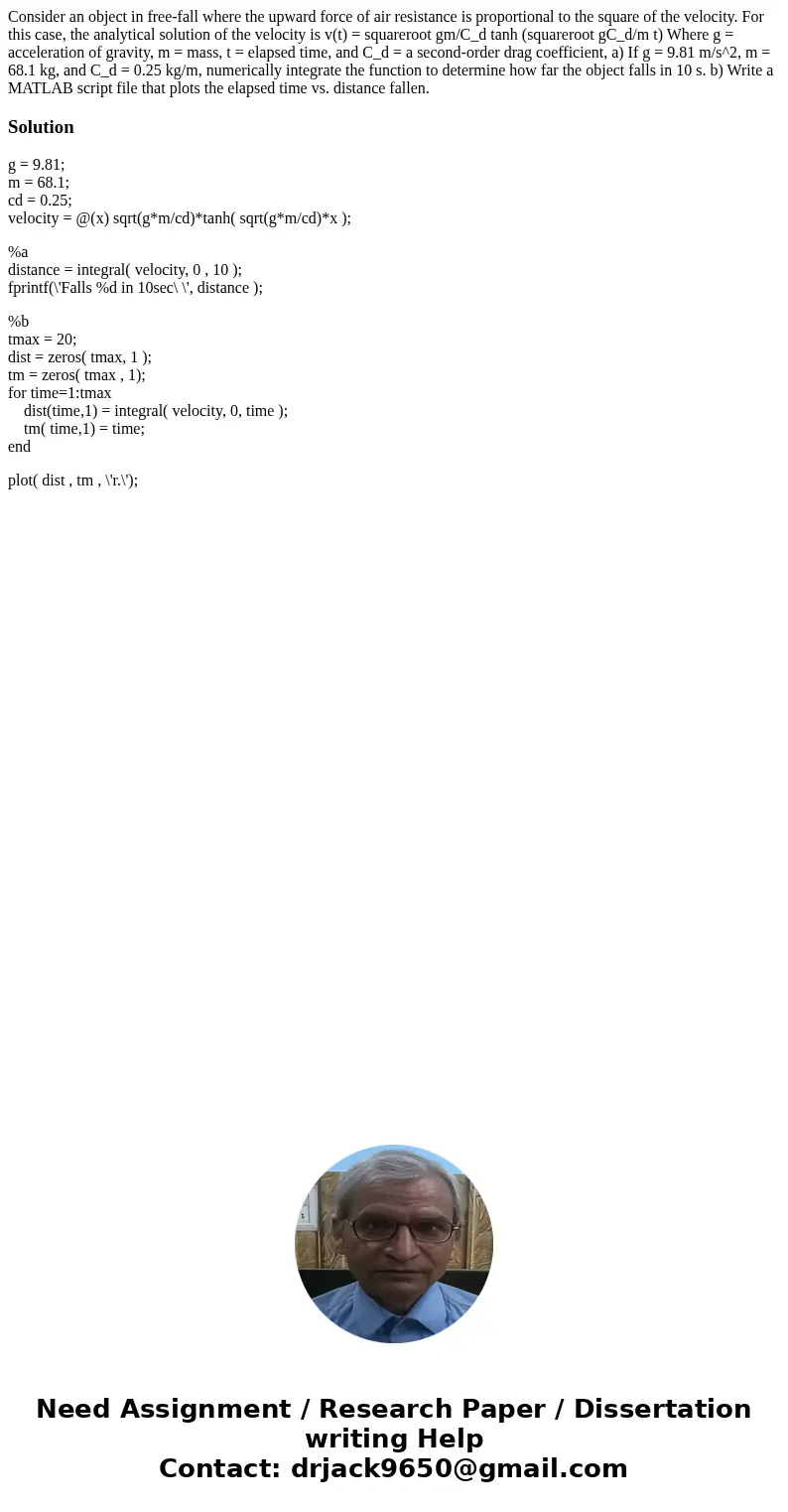Consider an object in freefall where the upward force of air
Consider an object in free-fall where the upward force of air resistance is proportional to the square of the velocity. For this case, the analytical solution of the velocity is v(t) = squareroot gm/C_d tanh (squareroot gC_d/m t) Where g = acceleration of gravity, m = mass, t = elapsed time, and C_d = a second-order drag coefficient, a) If g = 9.81 m/s^2, m = 68.1 kg, and C_d = 0.25 kg/m, numerically integrate the function to determine how far the object falls in 10 s. b) Write a MATLAB script file that plots the elapsed time vs. distance fallen. 
Solution
g = 9.81;
m = 68.1;
cd = 0.25;
velocity = @(x) sqrt(g*m/cd)*tanh( sqrt(g*m/cd)*x );
%a
distance = integral( velocity, 0 , 10 );
fprintf(\'Falls %d in 10sec\ \', distance );
%b
tmax = 20;
dist = zeros( tmax, 1 );
tm = zeros( tmax , 1);
for time=1:tmax
dist(time,1) = integral( velocity, 0, time );
tm( time,1) = time;
end
plot( dist , tm , \'r.\');

 Homework Sourse
Homework Sourse